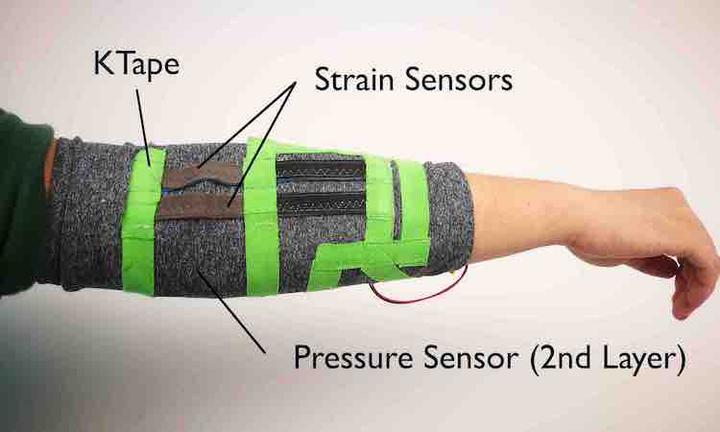Reconstructing Human Joint Motion with Computational Fabrics

Abstract
Accurate and continuous monitoring of joint rotational motion is crucial for a wide range of applications such as physical rehabilitation [6, 85] and motion training [22, 54, 68]. Existing motion capture systems, however, either need instrumentation of the environment, or fail to track arbitrary joint motion, or impose wearing discomfort by requiring rigid electrical sensors right around the joint area. This work studies the use of everyday fabrics as a flexible and soft sensing medium to monitor joint angular motion accurately and reliably. Specifically we focus on the primary use of conductive stretchable fabrics to sense the skin deformation during joint motion and infer the joint rotational angle. We tackle challenges of fabric sensing originated by the inherent properties of elastic materials by leveraging two types of sensing fabric and characterizing their properties based on models in material science. We apply models from bio-mechanics to infer joint angles and propose the use of dual strain sensing to enhance sensing robustness against user diversity and fabric position offsets. We fabricate prototypes using off-the-shelf fabrics and micro-controller. Experiments with ten participants show 9.69° median angular error in tracking joint angle and its sensing robustness across various users and activities.